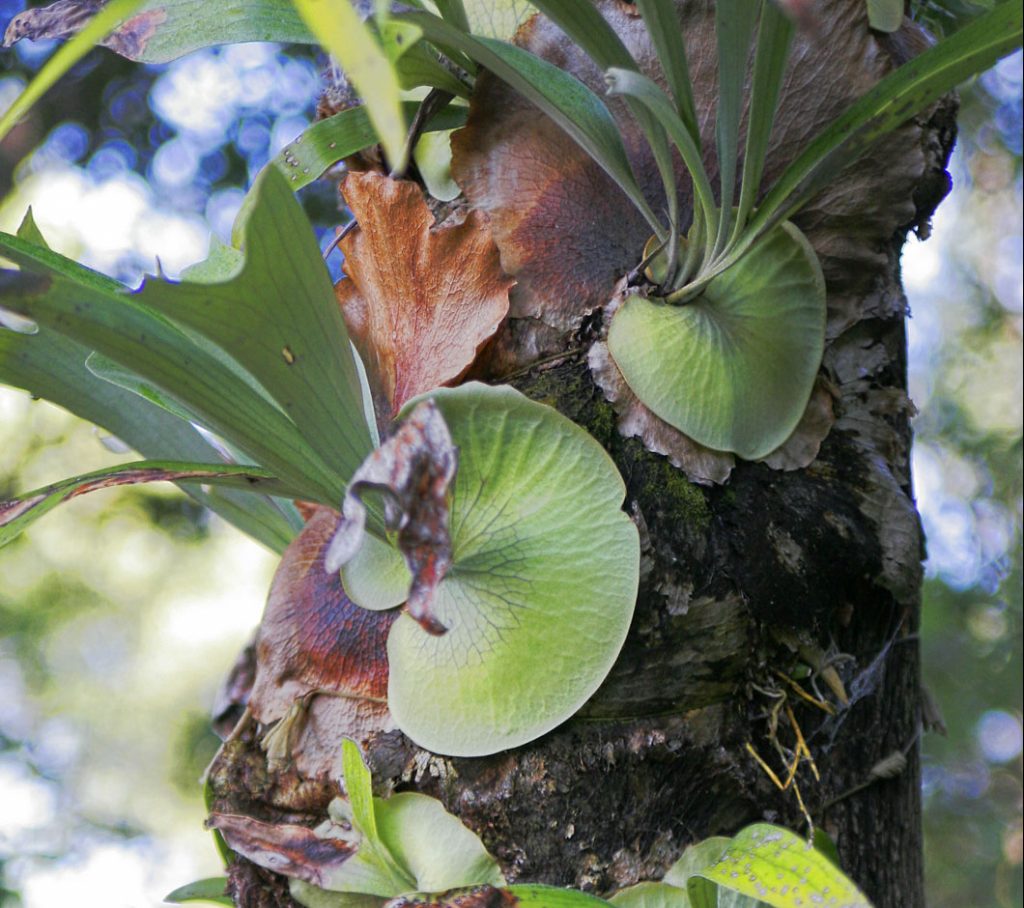
Native to rainforests of Java, New Guinea and southeastern Australia, this epiphytic fern is a member of the Polypodiaceae, a fern family that also includes resurrection fern. The plants grow up to 3′ across and have short rhizomes and two different kinds of fronds. The sterile fronds are basal, round to heart shape, and overlap to form a shield that clasps and covers the “root” . They lie flattened against a tree and take up water and nutrients, fading from green to brown with maturity. The arching fertile fronds emerge from the basal shield and are green, up to three feet long, and are pronged like the antlers of a male deer. Spores are produced in specialized structures on the undersides of the tips of the fertile fronds and give rise to offsets that can be used to propagate the plant. Staghorn ferns can be grown outdoors in warm climates but also as houseplants in cool climates and moved in and out of the house. The fern is usually mounted on wood planks with some organic matter such as peat moss for the root structure. The genus name, Platycerium, comes from the Greek words platys meaning flat and keras meaning horn, and refers to the shape of the fronds. The specific epithet, comes from the Latin bi- meaning two, and furcatus, meaning forked, and refers to the branching pattern of the fertile fronds.
Type: Epiphytic evergreen fern
Bloom: None
Size: 2–3 ‘ H x 2–3’ W
Light: Bright indirect light, partial shade
Soil: Organic matter and plank with excellent drainage
Hardiness: Zones 9-12
Care: Water often by submerging the whole plant for 10-20 minutes and then hanging to dry. Do not let the plant dry out. Mist as often as possible to keep humidity high. Fertilize monthly during the growing season.
Pests and Diseases: Spider mites, scale, mealybugs
Propagation: Division, spores (both are slow and difficult)
Companion Plants: Shade tolerant orchids, bromeliads, peace lily
Outstanding Selections: None available
Photo Credit: Wikipedia